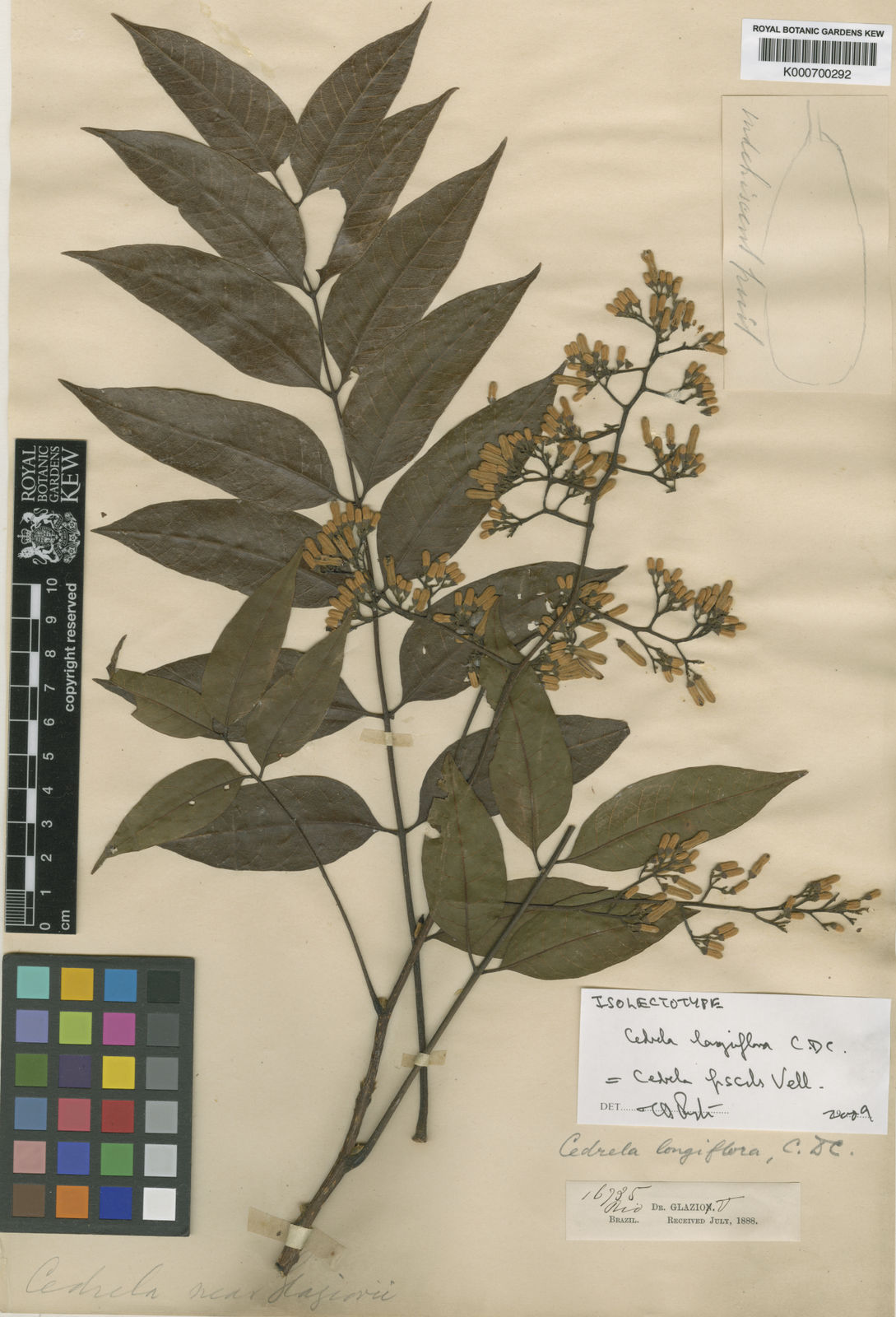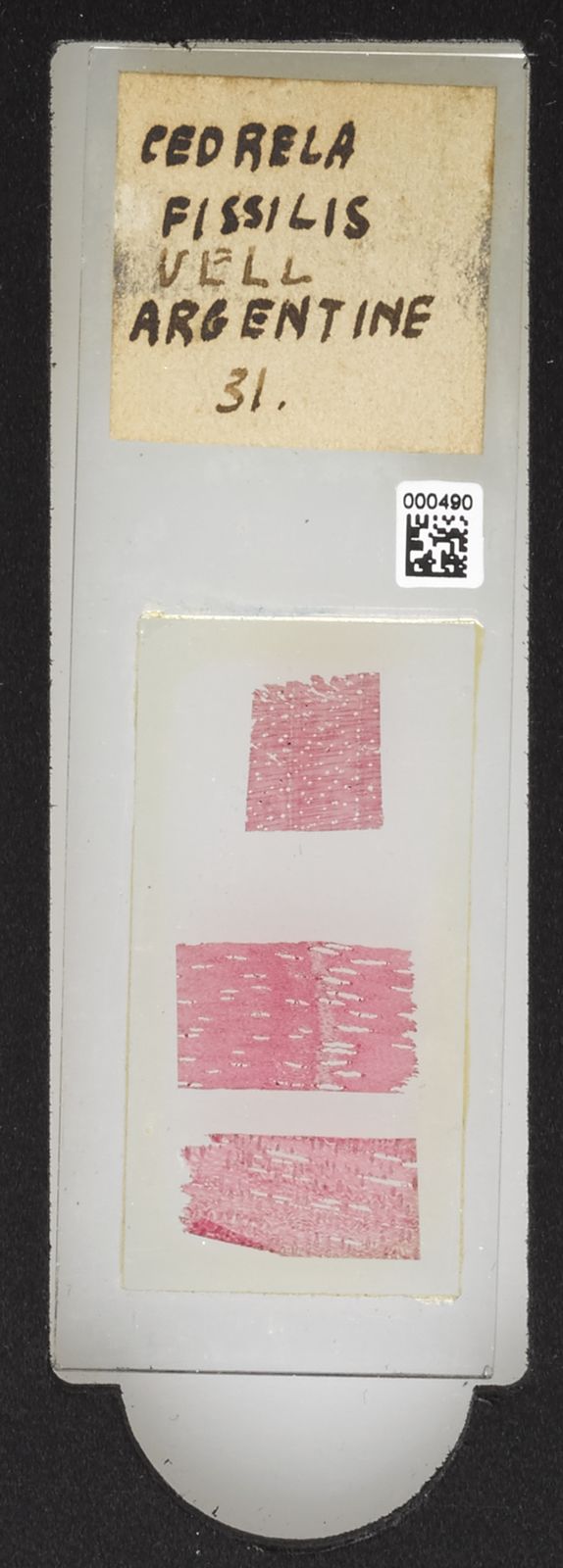Family: Meliaceae
Author: Vell.
Bibliography: “Fl. flumin. 75. 1829 (“”1825″”); icon. 2: t. 68. 1831 (“”1827″”)”
Year: 1829
Status: accepted
Rank: species
Genus: Cedrela
Vegetable: False
Observations: Trinidad to C. & S. Trop. America
Description
The Argentine cedar, scientifically known as Cedrela fissilis, is a notable species belonging to the Meliaceae family. The plant was described by Vell. in the seminal work “Flora Fluminensis” published in 1829, with further illustrations appearing in 1831. This majestic tree showcases the remarkable biodiversity found from the islands of Trinidad stretching across Central and South Tropical America.
Cedrela fissilis thrives in tropical environments, where it can often be found growing in lush forest regions. The Argentine cedar is highly regarded for its sturdy timber, which has an appealing reddish hue and a pleasant aromatic scent, making it a valuable resource in carpentry and furniture-making. The timber is not only appreciated for its beauty but also for its durability and workability, often making it a preferred choice for high-quality wood products.
Beyond its economic importance, the Argentine cedar plays a crucial ecological role. It provides habitat and food for a variety of wildlife, contributing to the health and stability of tropical forest ecosystems. The tree’s robust presence helps in soil retention and water regulation within its native habitat, which is critical for maintaining the environmental balance.
Researchers and botanists have long been intrigued by Cedrela fissilis, resulting in numerous studies and conservation efforts to preserve this species due to its ecological value and economic benefits. Despite its broad distribution, the Argentine cedar faces threats from deforestation and illegal logging, which endangers its population. Conservation strategies are thus essential to ensure that this valuable species continues to thrive in its natural habitat.
In summary, the Argentine cedar is a fundamental species in tropical America, valued both for its high-quality timber and its ecological significance. Understanding and preserving Cedrela fissilis is crucial for maintaining the biodiversity and health of the tropical forests it inhabits.
Common Names
Eng: argentine cedar
Spa: cedro, cedro batata, cedro blanco, cedro branco, cedro colorado, cedro misionero, cedro rosdao, cedro vermelho
Por: cedro-batata, cedro-branco, cedro-da-várzea, cedro-vermelho
En: Argentine cedar, Cedro, Cedar
Zh: 劈裂洋椿
Eo: Brazila cedro
Fi: Brasiliansetrela
Gn: Ygary
Lt: Skalusis kedrenis
Pt: Acaiacá, Cedro-batata, Cedro-branco, Cedro-da-várzea, Cedro-vermelho, Cedro rosa
Es: Cedro, Cedro real, Cedro Batata, Cedro Blanco, Cedro Branco, Cedro Colorado, Cedro Misionero, Cedro Rosdao, Cedro Vermelho, Cedro Diamantina, Cedro Pinta
Synonyms
- Cedrela pilgeri (C.DC.)
- Cedrela tubiflora (Bertoni)
- Cedrela tubiflora f. typica (Bertoni)
- Surenus fissilis ((Vell.) Kuntze)
- Cedrela barbata (C.DC.)
- Cedrela regnellii (C.DC.)
- Cedrela tubiflora f. grandifolia ((Bertoni) M.Buchinger & Falcone)
- Cedrela tubiflora var. intermedia (Bertoni)
- Cedrela tubiflora subsp. bertoniensis (Bertoni)
- Cedrela pachyrhachis (C.DC.)
- Cedrela tubiflora f. parvifoliola (M.Buchinger & Falcone)
- Cedrela tubiflora f. angustifolia (Bertoni)
- Cedrela macrocarpa (Ducke)
- Cedrela tubiflora var. lagenaria (Bertoni)
- Cedrela elliptica (Rizzini & Heringer)
- Cedrela fissilis var. macrocarpa (C.DC.)
- Cedrela fissilis var. glabrior (C.DC.)
- Cedrela longiflora (C.DC.)
- Cedrela tubiflora var. grandifolia (Bertoni)
- Cedrela brasiliensis (A.Juss.)
- Cedrela hirsuta (C.DC.)
- Cedrela brunellioides (Rusby)
- Cedrela brasiliensis var. australis (A.Juss.)
Distribution
- Argentina Northeast (native)
- Bolivia (native)
- Brazil North (native)
- Brazil Northeast (native)
- Brazil South (native)
- Brazil Southeast (native)
- Brazil West-Central (native)
- Colombia (native)
- Costa Rica (native)
- Ecuador (native)
- Guyana (native)
- Honduras (native)
- Panamá (native)
- Paraguay (native)
- Peru (native)
- Trinidad-Tobago (native)
- Uruguay (native)
- Venezuela (native)
Additional Images
Bark
Taken Dec 1, 2021 by Thiago Flores Flores (cc-by-sa)
Taken Sep 25, 2020 by Makoto Makoto (cc-by-sa)
Taken Sep 15, 2022 by Mónica Roa (cc-by-sa)
Taken Jul 23, 2022 by Trap Hers (cc-by-sa)
Habit
Taken Sep 11, 2020 by Makoto Makoto (cc-by-sa)
Taken Sep 25, 2020 by Makoto Makoto (cc-by-sa)
Taken Mar 6, 2020 by Makoto Makoto (cc-by-sa)
Taken Jul 23, 2022 by Trap Hers (cc-by-sa)
Flower
Taken Nov 13, 2022 by Makoto Makoto (cc-by-sa)
Taken Oct 13, 2021 by Makoto Makoto (cc-by-sa)
Taken Oct 13, 2021 by Makoto Makoto (cc-by-sa)
Leaf
Taken Jun 16, 2021 by Kai K (cc-by-sa)
Taken Nov 21, 2021 by Gustavo Fiedler Rossi (cc-by-sa)
Taken Oct 25, 2021 by Ayrick Bal (cc-by-sa)
Taken Dec 1, 2021 by Thiago Flores Flores (cc-by-sa)
Taken Oct 13, 2021 by Makoto Makoto (cc-by-sa)
Fruit
Taken Feb 6, 2021 by Makoto Makoto (cc-by-sa)
Taken Feb 6, 2021 by Makoto Makoto (cc-by-sa)
Taken Feb 6, 2021 by Makoto Makoto (cc-by-sa)
Taken Dec 2, 2021 by Felipe Domingos de Souza Felipe (cc-by-sa)

© copyright of the Board of Trustees of the Royal Botanic Gardens, Kew.

© copyright of the Board of Trustees of the Royal Botanic Gardens, Kew.

© copyright of the Board of Trustees of the Royal Botanic Gardens, Kew.
Sources
- WFO (No URL)
- IPNI (No URL)
- GBIF (https://www.gbif.org/species/7107974)
- POWO (http://powo.science.kew.org/taxon/urn:lsid:ipni.org:names:577744-1)
- PlantNet (https://identify.plantnet.org/species/the-plant-list/Cedrela fissilis Vell.)




















